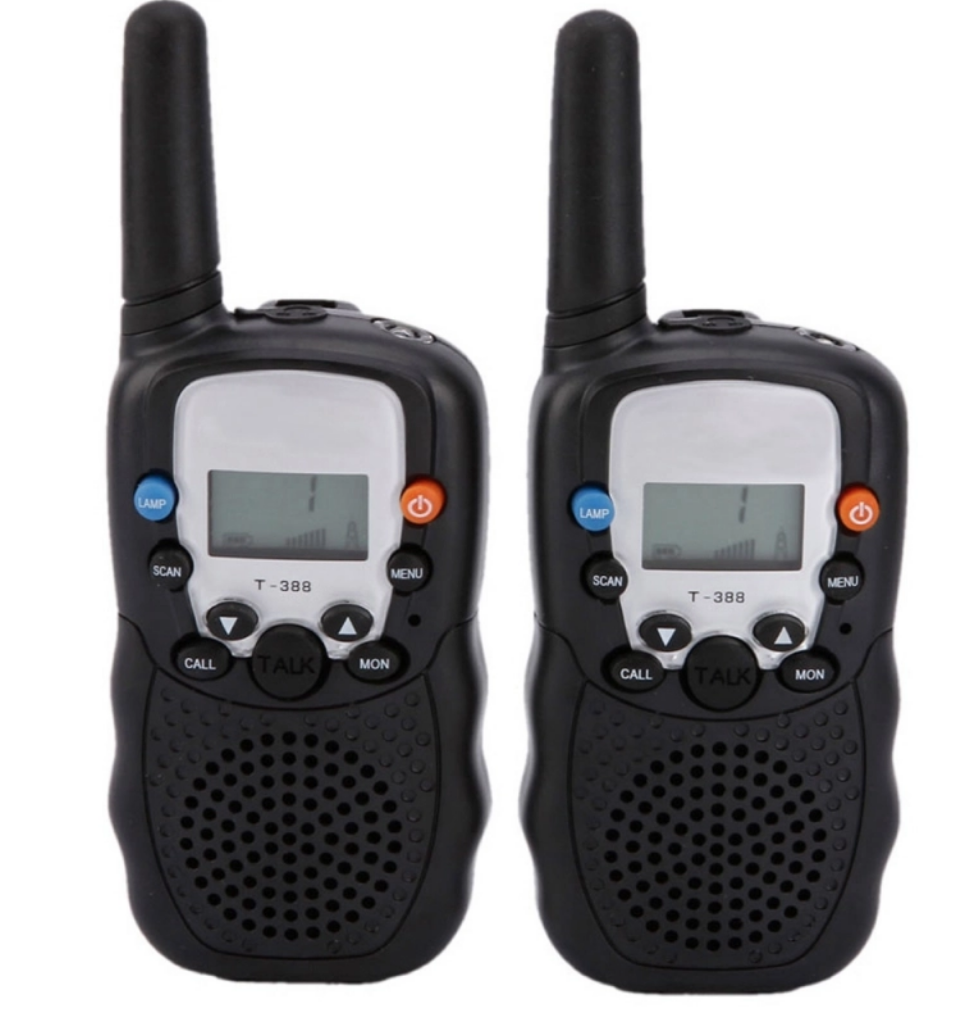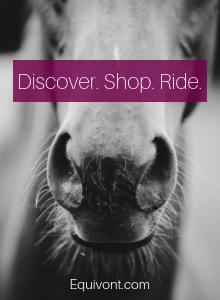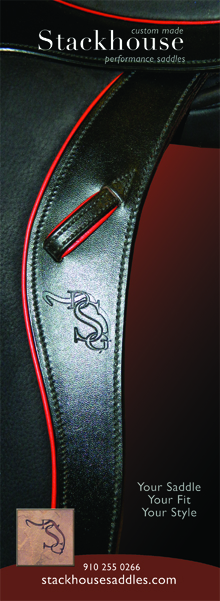Search the Site
Quin's Blog post # 3: How are you and your horse communicating?

You’ve talked on a walkie-talkie, right? There’s radio silence until somebody pushes a button. Then, sometimes there’s static or a click that serves as a warning for you to get ready to listen … or sometimes the talking just starts, maybe even with the first or last part cut off, so you have to guess what the person on the other side just said. If you happen to key your mike at the same time the other person does, nobody gets to hear anybody. It’s not an efficient communication system.
In contrast, consider your cell phone. The communication goes in both directions simultaneously. You can talk while the other person listens or listen while the other person talks. You can both talk at the same time. You can pause or even offer a long moment of thoughtful silence … but the other person can tell that you are still on the other end of the line. Definitely more effective as a communication tool than a walkie-talkie, right?
Now think about how you communicate with your horse.
Your conversation with your horse needs to be like a phone conversation -- not on and off with radio silence in between cues like a walkie-talkie. This is because your position and your connection to the horse through your aids is the only way your horse knows what you want.
Let’s look at it from your horse’s point of view. Legs mean go, right? Right. Usually. However, if your lower leg has a tendency to come off the horse, or if your horse is nervous and you take your leg off to “calm him down”, then you’re a walkie-talkie. How so? When your leg comes off, to your horse, that aid has disappeared. He knows it’s going to come back on … but is it going to come back on to fix your position? Is it going to come back on when you mean go? Is it going to come back on when you have to clamp on a bit tighter to add leverage because he’s already about to break the sound barrier? And when? When will it come back on? And how much? And will you want him to listen to it and go, or ignore it and remain steady?
If all of those questions started to make you feel a little anxious, imagine how your horse feels -- especially given that he can feel a fly landing on his side. Your leg is considerably more powerful and weighs a lot more than a fly. No wonder he’s anxious!
Try this instead. When you’re mounted, soften your thigh and give your knee permission to come away from saddle. It might even turn out a bit, away from the knee rolls, but that’s okay for now. Don’t worry about it. You can even shorten your stirrups a bit to help make it easier to feel. Your foot might turn out a bit too, seeking alignment with your knee, and that’s also okay. As long as you keep your leg bones lined up, with your knee directly above your toe, all will be well. This is a transitional phase while you learn to use your “cell phone leg”. Now, let your leg bend. SOFTLY. Feel more of your lower leg come into contact with your horse’s barrel? You’ve just made a phone call. Your leg can stay there at all three gaits, with only its own weight and a soft bend in your knee to keep it in place -- and it doesn’t suddenly disappear and then reappear at random intervals like somebody tapping your shoulder in the dark. When you want to use your leg, simply apply energy to the contact, and when your horse doesn’t need you to actively use your leg, it just stays there, like a quiet, supportive presence on the other end of the phone call. With a soft and reliably consistent rider leg in steady, quiet contact, most horses will relax and become more responsive, and you will be able to use a quieter, more subtle leg aid to get what you want.
Next, think about how you use your reins. Do you dangle them like cobwebs on the edges of your fingertips to keep a “light feel”? Or do you hold on with an iron grip to keep your horse’s head and velocity down where it belongs? Both of these techniques are walkie-talkies.
Again, let’s look at it from your horse’s perspective. We put the bit in the horse’s mouth because it is the most sensitive part of his body -- even more sensitive than his sides, where he can feel a fly land. Every single movement in the span of leather between your hands and the bit is evident to him, and your horse is continuously wondering which of those movements mean something and which don’t.
If you dandle the reins with a featherlight touch, you aren’t helping your horse as much as it might seem. When you hold the reins this way, your contact disappears and reappears, and since your horse can’t read your mind, he has no way to know what will come next. Your hands tune in and out on his sensitive mouth every time you want a turn or a flexion, a “headset” or a half halt … or even if you just need to adjust your grip or change the length of your reins. And then they disappear again. He never knows when your hands will come or go or what they might want, and, it’s all a bit of a guessing game.
Too much solid contact doesn’t help either. If you feel like you have to hold on and brace to keep your horse together, it’s like a walkie-talkie with the mike key stuck. Neither of you can really hear the other, and he can’t answer the question you’re asking. He can tell you want something, but do you mean “whoa” all the time? Or only when you pull extra hard? Should he ignore a little bit of pulling? Brace himself and hold you up? Drop behind the pull so you can let go? The latter might feel right at first, but after you let go, then your contact disappears, and he’s left guessing. Like your leg, your hands need to be a cellphone, too.
To find this feel, imagine a polite, warm, non-competitive handshake. A parent of one of my students compared it to holding a baby. Too hard, the baby cries. Too soft, the baby thinks you’ll drop them … and they cry. Hold them in a soft, secure way, and everyone is happy. Got the image in your head? Good.
Now find a friend to play with you. Find a bridle with no horse in it and have your friend hold the reins down by the bit, and you hold the reins like you’re riding. (It might help if your friend is a really good sport; he or she can put the headstall around their neck to keep it out of the way.) Make sure your hands are your body’s width apart so the line from your elbow to the bit is straight on all planes, and put your elbows ever-so-slightly in front of your hip bones. Put the weight of your arms into your elbows, so your arms hang off your shoulders, but bend your wrists up just enough that your friend can not feel the weight of your forearms on the reins.
Keeping the weight in the back of your arms and not in your hands, find a soft, even contact with the bit. Be sure your contact is elastic, fluid, and steady. When you’re ready, ask your friend to slowly and smoothly start moving the reins forward and back, like you are riding the walk. Maintain the soft, elastic, even feel by moving your elbows with the reins. Avoid stifling the movement by getting stiff and try not to let the reins dip from lost contact. Try it with your eyes closed!
Once you have this mastered, your friend can start testing you by stopping without warning, picking the bit up, lowering it, or moving each rein separately. Your goal is to keep the same feel no matter what. The final step is to ask your friend to halt by lowering your elbows and offering resistance to the motion. Increase your resistance gradually until your friend stops moving. Be sure you end the resistance but maintain the contact when your friend stops. Ask your friend for feedback. Did your “whoa” feel smooth and fair or jolting or harsh? (Hint: You’re aiming for smooth and fair.)
The final step is to get on your horse, feel his lips on the bit at the end of the reins, and try to create the same soft, even, elastic feeling as you did on the ground with your friend. Have a conversation with your horse. If he feels bracey, check your own body. He’s probably responding to what he feels coming from you. Is his head too high, or is he leaning on the bit? Check where your hands are and how are you using them. If you want an elastic feel from your horse, show him how to do it. Lead the way. If he gets soft and light, if he stretches his neck forward and opens his throatlatch, if he relaxes and blows his nose, you’re doing it right! It will take some getting used to, but if you stay soft and listen to your horse’s feedback the same way you listened to your friend, the two of you will benefit from a pleasant, two-way conversation about contact … and no more walkie-talkie reins!
For a horse to go well -- for him to be responsive, confident, and relaxed -- it’s imperative that he knows what to expect, and we do that by making our aids consistent, fair, and available for the conversation 100% of the time. No radio silence, no surprise cues. Horses don’t like surprises. As riders, our goal is to ensure that our aids don’t ever fall into that “surprise” category, and the communication between us and our horses goes both ways. With a steady, relaxed leg and consistent, elastic contact, you will invite your horse to the conversation … and he can show you the rest.






